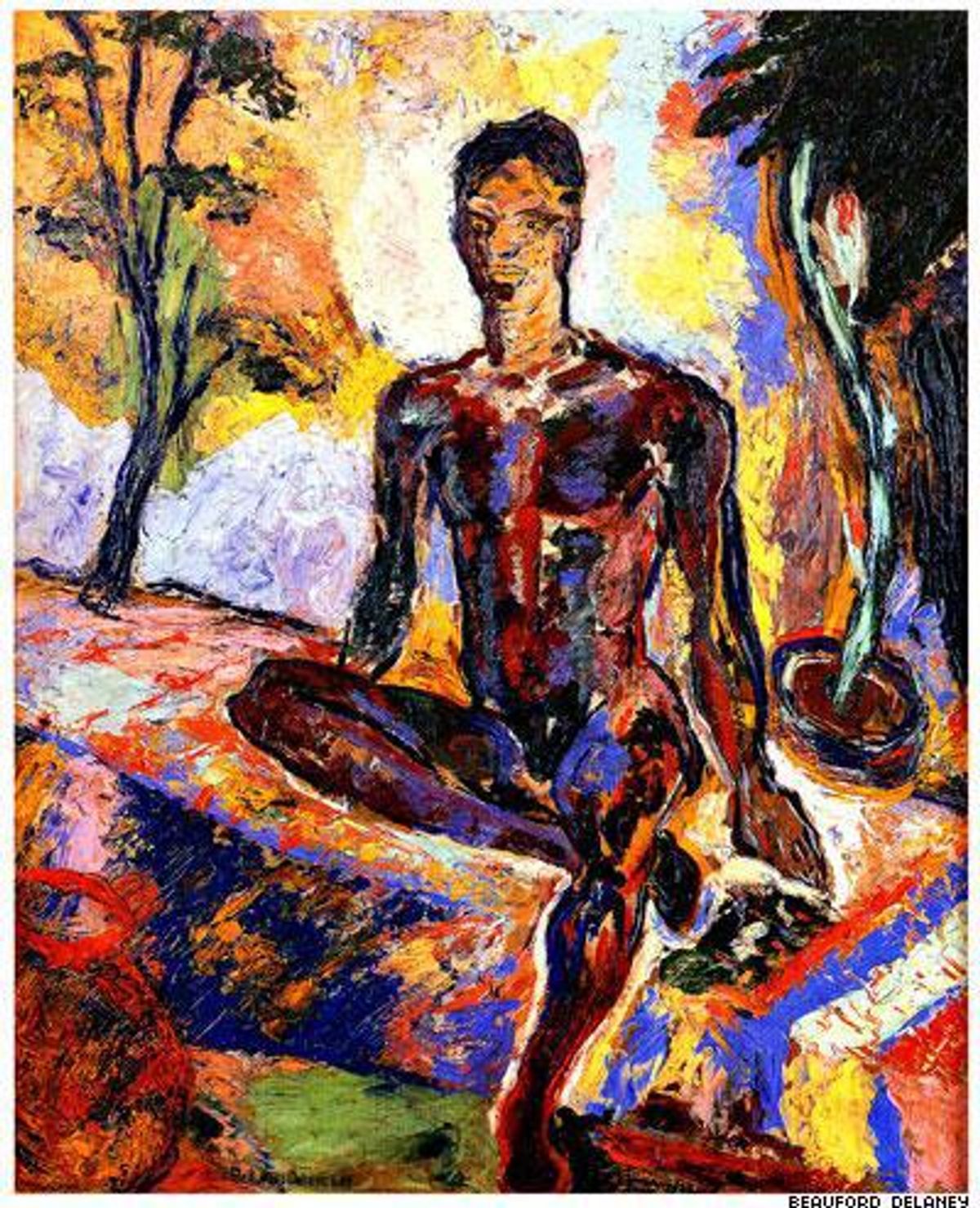
James Baldwin felt he was part of his elders' hope for the future. How can we make it possible for young trans men and women to feel that for themselves?
November 07 2013 6:00 AM EST
November 17 2015 5:28 AM EST
By continuing to use our site, you agree to our Private Policy and Terms of Use.

When James Baldwin was 16 years old, he sat nude for the queer Harlem Renaissance painter Beauford Delaney, who was then in his 40s. The two were never lovers, but formed a lifelong,familial mentorship; Baldwin spoke of Delaney as his spiritual father. Delaney painted many images of Baldwin over the years. The painting I'm referring to, Dark Rapture, shows Baldwin in bruised colors, but in harmony with his environment, welcome in the world Delaney has painted. I came across this image only recently, a reproduction in the fantastic new survey book Art & Queer Culture (Phaidon). I held the book open to Baldwin's image, arrested by the ecstatic beauty but also disturbed. I stared and stared. Looking at Baldwin like this, young and vulnerable, some vague dread tugged at me but I couldn't place its source. Like most lovers of American literature, I've spent a lot of time thinking about Baldwin: about his rage, his eloquence, his activism; about Baldwin in Harlem and Baldwin in Paris. I've read his novels and essays and watched him dazzle in television interviews. Yet when I've thought about Baldwin as a child and as a very young man, I've thought mostly about his domineering father, about his preaching in and then fleeing the church, about just how unwelcoming, how hostile, the world was to this beautiful brown gay boy. Now, looking at this image, I remembered that Baldwin as a young man was also cherished. In certain pockets of New York, by certain right-minded folks, and most certainly in Delaney's studio, Baldwin was seen for all his brilliant potential.
I should have felt comforted that Baldwin had this, at least, but instead I was troubled. Why? I went to the bookshelf and flipped open The Price of the Ticket, hoping to find out what the man himself had to say about this time in his life, and right there on page 1 was Baldwin talking about Delaney. He wrote about how Delaney introduced him to a world of black intellectuals, artists, musicians, and socialists. Many of them were celebrities, like the singer Marian Anderson, but Baldwin was encouraged not to see them as celebrities but as his cultural ancestors. And Baldwin was made to understand, as well, that like all family, they had expectations for him, and to that end they would do their best to protect him. "If Beauford and Miss Anderson were part of my inheritance," he writes, "I was part of their hope."
I looked again at the portrait of young Baldwin. I thought, My god, to be 16, black, and queer in 1941, and to be loved, and to feel welcome, and to understand oneself as the hope of a movement.

Inheritance and hope (from left) Artist Beauford Delaney in 1953, the year he moved to Paris; author James Baldwin at his house in Saint-Paul-de-Vence, France in 1979; memorial gathering for slain transgender woman Islan Nettles in Harlem on August 27, 2013.
And then I realized the source of my dread and my trouble. Earlier that day, I had read in the paper that Islan Nettles, age 21, had died of her injuries a week after a transphobic street beating left her in a coma. I had stared and stared at the accompanying photo. The news had me heart- broken, horrified, and pissed, and worse, cynical about what would come next. Why was the world so unloving, so violently, lethally unwelcoming to our transgender youth? I knew that there would be a vigil, and I knew that eloquent, enraged, passion- ate words would be spoken, that trans women and others would stand up and say what needed to be said, but how would they be heard? And by whom?
Nettles was a black trans woman beaten to death in Harlem, and what terrified and enraged me was the thought that her race, her class, her gender identity --hell, the very neighborhood of her murder -- meant that her death would not shock enough to draw the world's attention; not only the attention of mainstream media, but perhaps not even from the gay main- stream community.
We need to be shocked. I did not know Nettles. I know only what I've read -- that she was creative, a fashion designer -- and what I've seen -- that she was very beautiful and very young. I do not know what kind of personal mentorship she had in her life. I want to believe that at 21, black and trans in 2013, there were places she felt loved and welcome, and I want to believe that she understood herself as the hope of our movement. But I do not know, I do not know. I only know what I felt looking at her photo, and what I feel now: That despite all the strides the queer movement has made, on the whole, we still do not love and cherish transgender people enough, especially young trans women and trans men of color. We do not see them as we should, as the flowering of our movement, as our hope.
Fans thirsting over Chris Colfer's sexy new muscles for Coachella